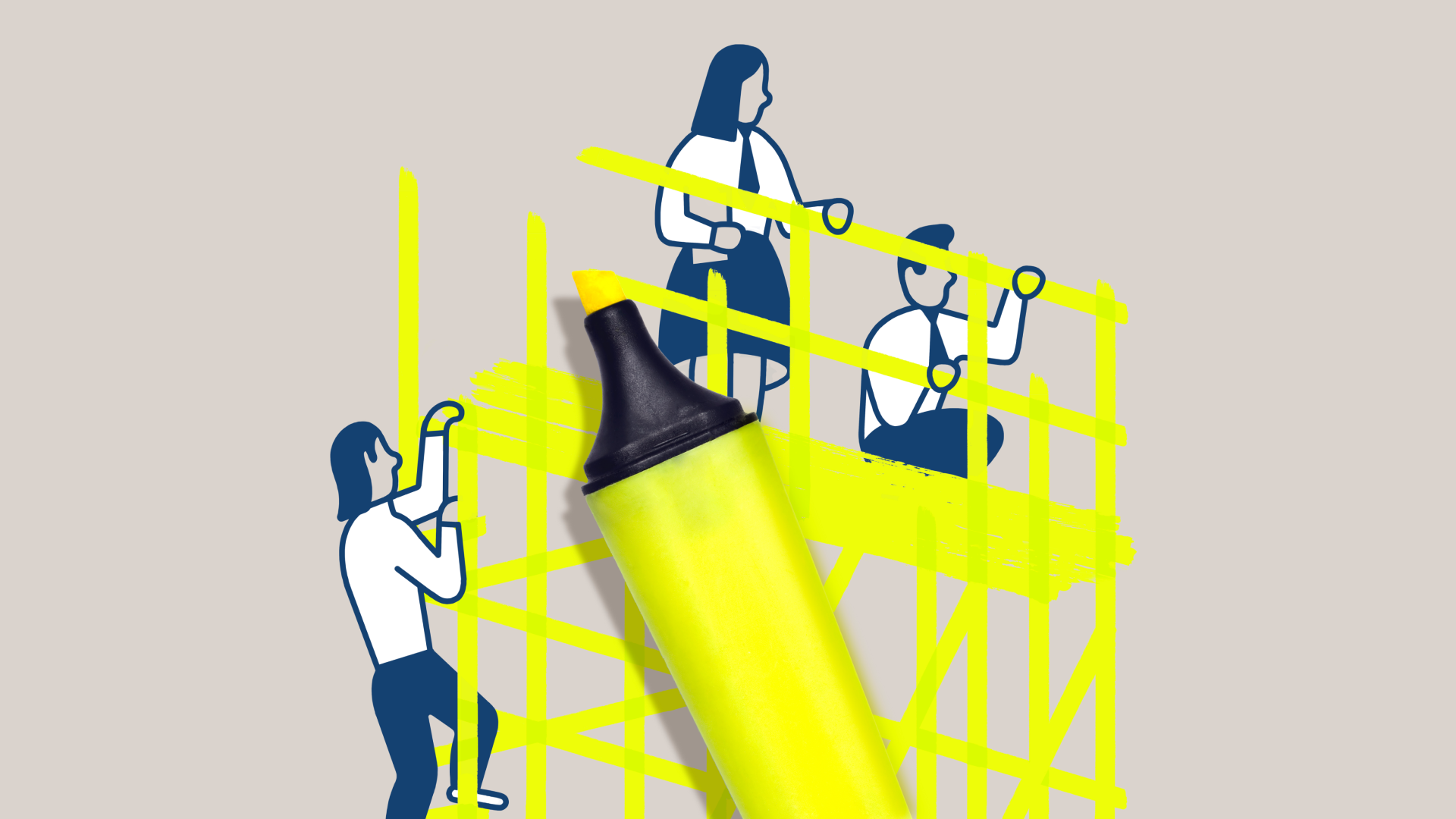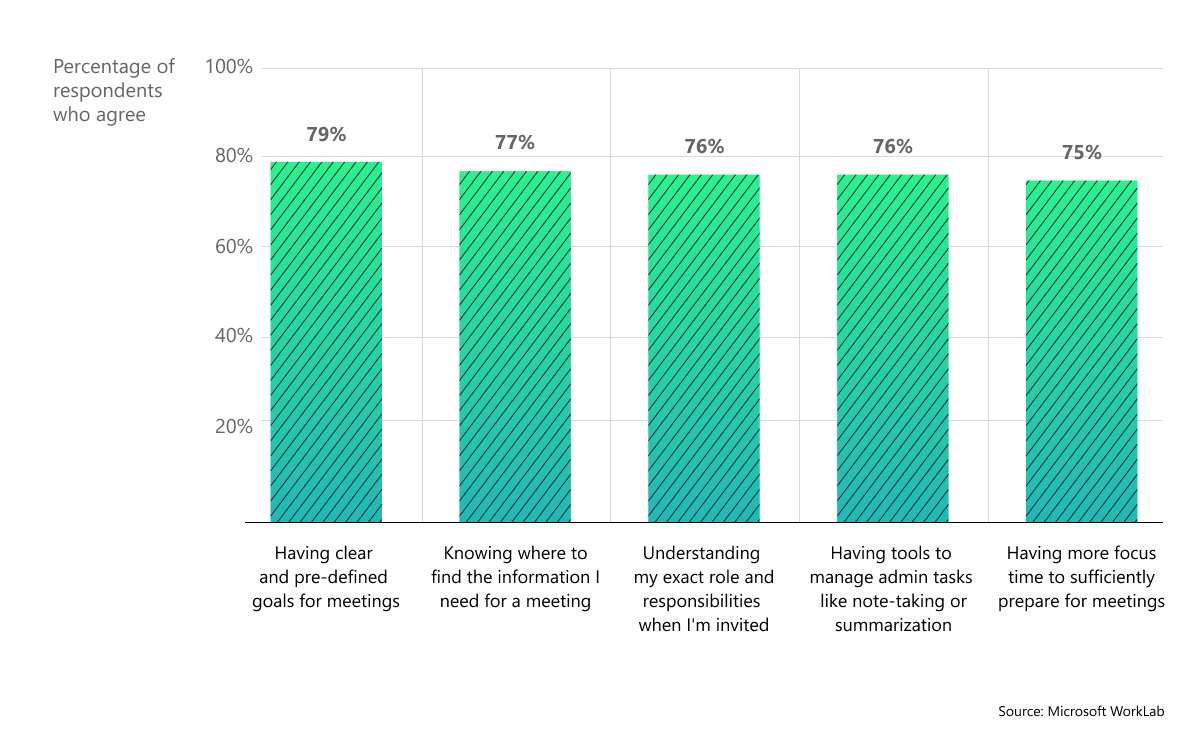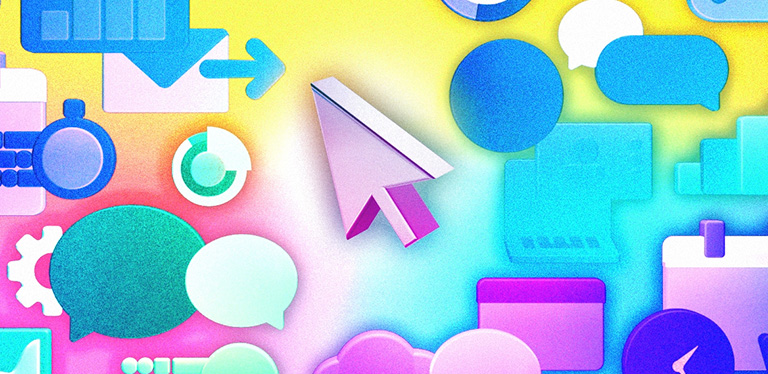
Meetings can spark ideas, solve problems, and strengthen teams—but they can also be a source of stress. More than a third of people say they have too many meetings, and that most are inefficient, according to our global survey of more than 18,000 people.1 “The amount of time spent in meetings is beyond any other use of our time,” says Nicole Herskowitz, Vice President, Microsoft 365 and Teams. “If we don’t make them more intentional, then we’re burning our most important resource: our people.”
The good news? Organizations can use AI to help create a more thoughtful meeting culture—with fewer, better check-ins; clearly defined agendas and follow-ups; and purposeful engagement. People can quickly access summaries of missed meetings and ask Microsoft Copilot for key takeaways, action items, and next steps—”a huge time-saver,” Herskowitz says.
A more intentional meeting culture helps the bottom line: Keep in mind that a one-hour meeting with five people who make $100,000 a year costs $350, according to a calculator from Harvard Business Review. Multiply that across the organization, and those sums add up fast. Anecdotally, business leaders say better meetings have other benefits, too, from reducing employee frustration to speeding up problem-solving. Here’s how AI can help improve meetings—now and in the future.
Prep for success: As a product executive, a big part of Herskowitz’s job is meeting with customers—and there’s often little time to prepare. So she uses Copilot to quickly surface the background she needs. “I often ask Copilot to show me all the relevant emails, chats, and documents about the customer and our previous interactions. It helps me get up to speed so that I can best address customer questions,” Herskowitz says. Copilot can pull data from across all your work tools—emails, meetings, chats, documents, and more—which saves you time in searching for and compiling the information you need.
Sharpen the agenda: When people are busy, they don’t do enough to plan for meetings, “especially when it comes to expressing the meeting goal,” says Sean Rintel, a Senior Principal Researcher at Microsoft who has studied collaboration for more than a decade. “Lo and behold, we have lots of ineffective meetings.” To fight that tendency, use AI to draft a better meeting invitation that includes an agenda. Tell Copilot about your meeting, then ask it to craft an invitation that clearly articulates the goal, and includes specific agenda items and desired outcomes, Rintel suggests.
What would make meetings better?
People want clear and pre-defined goals when they meet

When we surveyed 18,100 workers across 12 markets, we asked what factors would help them collaborate more effectively at work.
Free up calendars: Dr. Carrie Goucher, founder of the consultancy FewerFasterBolder, has a saying: Consult wide, meet small. Instead of bringing a large group of 10 or more people into a decision-making meeting, leaders might prepare in advance by gathering feedback from the broader team (asking Copilot to synthesize responses if they are particularly numerous), then inviting a small group who will represent those views and make the final call. It’s one way to “reduce meeting load and make enough space so that people can do their real thinking work in the working day, not at home at 10 o’clock at night,” Goucher says. Having a smaller meeting also enables more candid conversation.
It also allows others to cut down on unnecessary meetings. According to our 2023 Work Trend Index, the top reason meetings were worthwhile was, “I will receive information that will help me do my job better.” Because AI turns meetings into more than just a fleeting moment of time, it liberates people from attending an hour-long sync to get one minute of job-critical insight. Instead, they can query Copilot about what they missed—and you can keep your meeting to only the essential players.
Get feedback in real time: Worried you’re talking too much in a meeting? Not enough? Copilot can let you know. During meetings, Goucher also asks Copilot questions like: Can you tell me the pros and cons of this person’s suggestion? What question could I ask to help us make progress? How can we speed up this decision? Who hasn’t spoken much? Who has spoken the most today? As Goucher says, Copilot can be “a sort of personal meeting coach.”
Let AI do the note-taking: “I used to be one of those people who furiously takes notes, all through meetings,” Herskowitz says. But in her quest to capture everything, she wasn’t always fully present for the conversation. Now she relies on Copilot, asking simple questions after the call: What were the key points from this meeting? What are the follow-ups? Were any decisions made? Knowing that Copilot is keeping track of everything, Herskowitz says, “I can really focus on the discussion and be engaged.”
Four Ways to Get More Out of Your Meetings
Adapt on the fly: Different types of meetings have different goals. Brainstorming sessions can be open and free. Some meetings require decision-making, others update the team, and some are about togetherness. “We use the same word, ‘meeting,’ to refer to all these activities that are actually very different,” Rintel says. “And for the moment, meeting interfaces are one size fits all.” But what if the interface could adapt to different or shifting goals? Already, you can ask Copilot to generate a collaborative whiteboard during a brainstorming session to visualize what you’re talking about. Our researchers at Microsoft are exploring what might be next. Perhaps one day the meeting interface will shape-shift automatically—so if your conversation segues into data analysis, a spreadsheet could pop up. Or if you don’t have relevant experts on hand, one or more AI agents with access to the right expertise could join the conversation. The idea is to apply AI to the meeting context in a more engaging, less fatiguing way, and to enhance the purpose of each meeting.
Keep you accountable: AI tools can already articulate next steps coming out of a meeting, helping cross-functional teams work together better. “What if Copilot could track those next steps, make sure people are making progress on them, and suggest when to put them back on the agenda?” Herskowitz says. “I want Copilot to be that proactive partner, to help us move projects forward, bring the business forward.”
Intentional meetings get to ideas and solutions more efficiently, and that’s good for more than just your bottom line. “If I’m able to reduce the time to solving a customer problem, that is real money back into the hands of my company, but that’s also a real benefit for the customer,” Herskowitz says. It’s a benefit for your people, too, freeing them up for the work that’s most strategic, creative, and ultimately rewarding.
And remember: While AI can help streamline meetings, it’s ultimately on the meeting organizer to ensure every gathering is purposeful and inclusive. You’re the pilot—so take charge, set the agenda, and steer your meetings toward success.
1Our survey was conducted by an independent research firm, Edelman Data x Intelligence, among 18,100 full-time employed or self-employed workers across 12 markets between July 21, 2023, and November 1, 2023. To read more results from this survey, check out our Work Trend Index Special Report.

